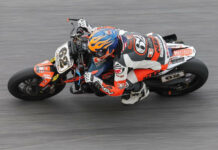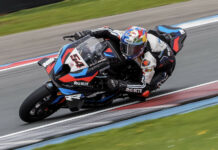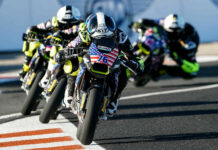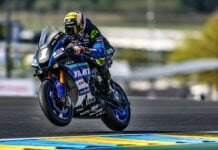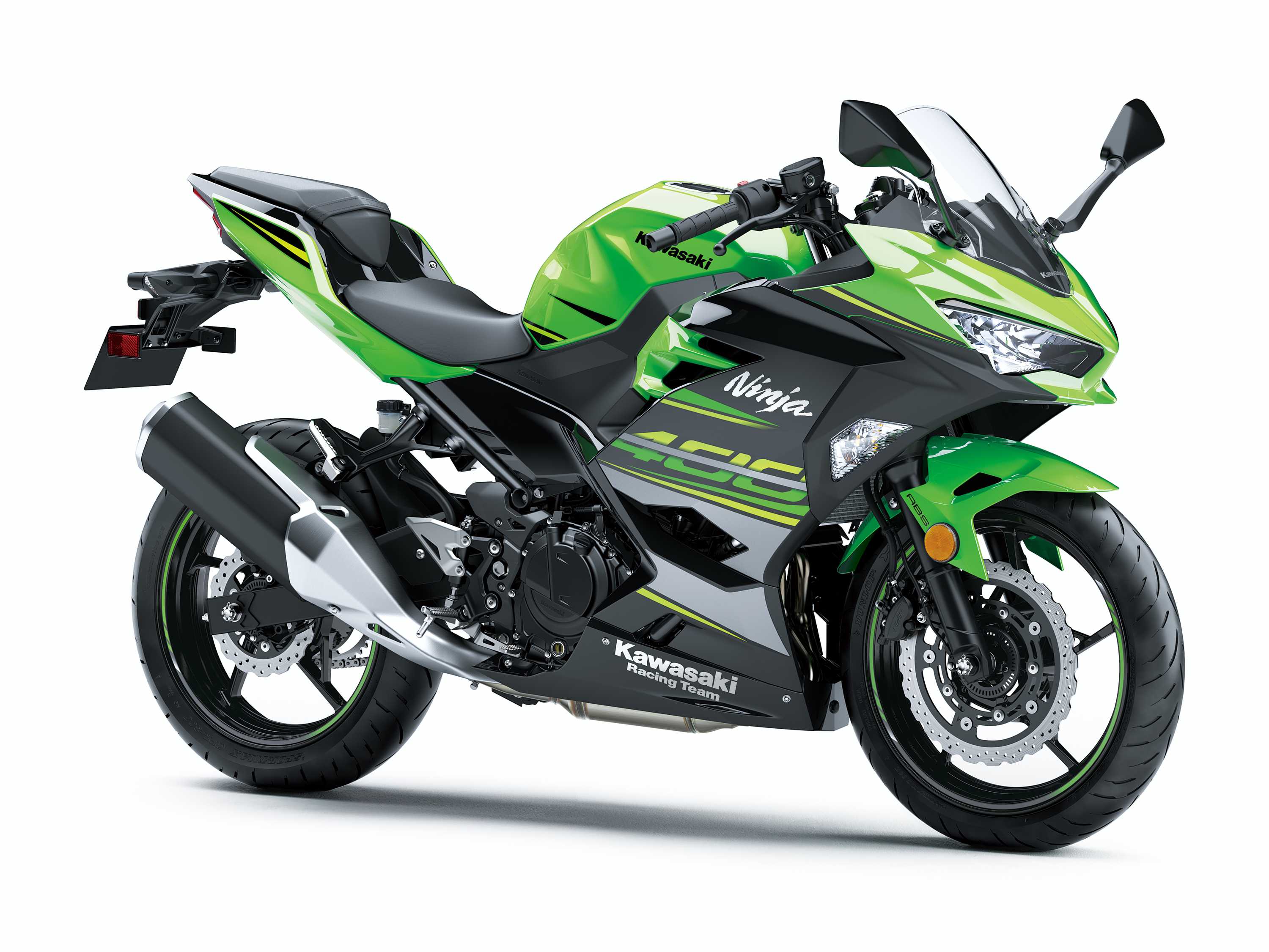2018 KAWASAKI NINJA® 400
NIMBLE HANDLING AND HIGH PERFOMANCE APPEALS TO WIDE RANGE OF RIDERS
Kawasaki is no stranger to leading the way in performance and technology in the small displacement sportbike segment, one which Kawasaki pioneered with the Ninja® 250R motorcycle. The all-new Ninja 400 encapsulates the winning formula of its Ninja® predecessors and a decade’s worth of small displacement, sportbike knowledge of how to build the optimal motorcycle. One that not only has stunning looks, but also increased engine performance, improved handling, and lighter weight, all to get to the head of the class.
The newest addition to the Ninja family, the Ninja 400 is packed with premium class leading components and advanced technology, such as the 310 mm front disc and 41mm inverted fork. Supplying the power to let the good times roll is an all-new 399ccparallel twin four-stroke engine, which is paired with an all-new lightweight trellis frame.
Highlights of the 2018 Ninja 400
- Powerful, Rider-Friendly 399cc Parallel Twin
- Lightweight Trellis Frame, providing nimble, confident handling
- Significantly Lower Weight
- Relaxed, Sporty Riding Position
- Easy Reach to the Ground
- Superb Ride Comfort & Excellent Wind Protection
Parallel Twin Engine & Transmission
The Ninja 400 features a compact, lightweight, and efficient 399cc liquid-cooled four-stroke parallel twin engine. The increased displacement comes by way of the 70.00 mm x 51.8 mm bore & stroke. Performance increases were also achieved through airbox and intake modifications, as well as engine internals.
Significant performance gains are due to the new downdraft intake, which increases performance especially at high rpms and larger air box, which offers increased intake efficiency. The downdraft intake utilizes the shortest and most direct path for air to enter the cylinder, which improves cylinder-filling efficiency and contributes to increased engine power, especially at high rpm. Airbox volume has been significantly increased to 5.8 liters. The new airbox features revised rigidity at the top of the airbox, which eliminates unwanted noise, enabling riders to more clearly hear the engine’s intake note when accelerating. Different height intake funnels contribute to the engine’s smooth response by allowing torque valleys to be tuned out.
Starting from scratch, a new engine design allowed Kawasaki engineers to build the optimal performance engine with high grade components, such as the new 32 mm throttle body that helps flow the greater volume of air from the revised intake, contributing to strong high-rpm performance. The throttle body butterfly valves are oval-shaped to allow their closed position to be set at an angle, allowing for quicker throttle response as the valves open from initial valve rotation. Intake and exhaust valve diameters were chosen for optimal high-rpm performance. The intake valves are 27.5 mm, while the exhaust valves are 23.5 mm. The new intake design allowed for the injectors to be positioned closer to the throttle valves, enabling them to spray fuel directly onto the valves, which increases combustion efficiency and results in a linear throttle response. Kawasaki’s modern fuel-injection tuning allowed for the elimination of the sub-throttles on the Ninja 400 providing for additional weight savings.
The engine design of the Ninja 400 contributes to the lightweight of the bike and was achieved through a number of components. The aluminum die-cast cylinder with an open-deck design offers excellent heat dissipation and contributes to low engine weight; it is also sleeveless and features plated bores. The cylinder has been tilted forward 20 degrees to aid in achieving a short engine. Complementing the new cylinder design is a flatter piston crown with reduced squish, which contributes to the higher 11.5:1 compression ratio. Oil jets help cool the underside of the pistons to allow for a lighter piston design. Also aiding in the creation of a lighter and shorter engine was the decision to move the cam chain to the outside of the engine and the primary reduction gear line inside; it also shifts engine volume forward so that the rear of the engine could be slim. Forged camshafts, something rarely found on small displacement machines, were also utilized to contribute to the weight reduction efforts for the Ninja 400, saving nearly a half-pound. Additionally, a completely revised layout for the cooling system minimizes external piping and saves weight.
When excessive engine braking occurs as a result of quick or accidental downshifts, the slipper cam comes into play, forcing the clutch hub and operating plate apart, which relieves pressure on the clutch plates to reduce back-torque and help prevent the rear tire from hopping and skidding.
Innovative Kawasaki technology such as the new radiator fan cover, which is located behind the radiator, directs hot air out to the sides away from the rider, reducing rider discomfort. Redirecting the hot air also helps keep the tank, frame and other parts that contact the rider cooler. The new heat management system was designed using Computational Fluid Dynamics analysis, and unlike the previous version it requires no parts to direct airflow inside the engine compartment.
Chassis
While it was important to decrease the weight and wheelbase of the new chassis design, it was also crucial to maintain the supersport handling characteristics, by adding length to the swingarm. Additional weight savings came as a result of the swingarm and mounting plate design. The die-cast aluminum swingarm mounting plate eliminates the need to add heavy additional cross member pieces to the frame because it bolts to the back of the engine, allowing the pivot shaft to go through the plate and mount the swingarm directly to the engine. Forming the swingarm from square tubing eliminates the need for additional gusseting, while maintaining rigidity and keeping weight to a minimum.
Additional weight concessions were made through slimmer seat design, a new wheel design, material trimmed from upper triple clamp, front fender brace eliminated, and new heat management system that uses fewer parts. All of these design improvements helped to create a bike that weighs in at only 362 pounds, a weight that is right in line with the smaller displacement models in its class, and is actually 19.7 pounds lighter than the Ninja 300, all while improving handling and performance.
Suspension
Complementing the ride comfort of the all-new trellis frame is a new larger 41 mm telescopic front fork, which provides riders with a much improved front end feel and increased traction, facilitating direction changes even when the bike is fairly upright. Thanks to design of the bigger fork, the front fender brace could be eliminated, helping to shave additional weight off the bike. A steeper caster angle improves the nimble handling feeling of the Ninja 400. Also aiding in the pursuit of improved handling and comfort is a new linkage and rear suspension settings. The shock features 5-way preload adjustability, which allows riders to adjust the stiffness and ride height to suit body weight or when riding two-up. The shock is easily adjustable with the on-board tool kit. The overall the suspension of the Ninja 400 offers the plushness of a much larger displacement bike.
Brakes & Wheels
The wheels and tires also follow the same weight savings theme applied throughout the build of the Ninja 400. The stylish and lightweight 5-spoke star-pattern wheels offer lateral rigidity and contribute to the bike’s sporty and lightweight image. The wheel design is a product of technology gained in World Superbike competition. The lightweight Dunlop radial tires on the Ninja 400 contribute to both agile handling and riding comfort. The 150 mm rear tire provides a more aggressive looking rear end for the all-new Ninja.
Ergonomics
The relaxed rider triangle of the Ninja 400 accommodates a wide array of riders and riding situations rather than featuring an aggressive riding position that compromises comfort. The Ninja 400 features an elevated handlebar and a more forward footpeg position that allow the rider to control the bike while also offering rider comfort. The clip-on handlebars offer sporty, slightly downward positioning. The slightly forward positioning of the supersport-style aluminum footpegs contributes to direct feel, good controllability, and comfortable riding position of the Ninja 400.
The design of the bodywork on the Ninja 400 offers increased wind protection and ride comfort. Rather than completely blocking the wind, the fairing promotes clean airflow around the rider and helps to pull hot air out of the engine compartment. The all-new sleek and slim 3.7-gallon fuel tank design enables good contact with the bike for increased control, all while helping to shave additional weight from the bike.
The seat height and how it narrows at the front makes it even easier for riders to get their feet to the ground. A deeper seat pan allows for a 90 mm low-rebound urethane seat cushion, offering improved ride comfort.
Styling
Head-turning good looks have always been synonymous with the Ninja line of motorcycles, and the new Ninja 400 is no exception. It carries Ninja styling from the mighty Ninja® H2 and Ninja® ZX™-10R, such as the chin spoilers at the bottom of the front cowl, triple-peak motif of the tail cowl,and the LED taillight design. Its bodywork packs the punch of a much larger machine, which is reinforced by its superb fit and finish.
The clean and sharp design of the new front cowl reflects the Ninja 400’s enhanced sport performance, while also instantly identifying it as a Kawasaki Ninja. Also adding to the sharp looks are slim LED headlamps that feature dual low and high beams, as well as an LED position lamp. Built-in front turn signals have a clean, unitized appearance. Sharp rear turn signals complement the aggressive Ninja styling; both front and rear turn signals utilize clear lenses for a high-quality look. The mirrors feature new stays and are positioned higher and further apart. The bike also features a sporty compact supersport-style fuel tank, with clean and aggressive lines, and a new race-inspired minimalist front fender design that eliminates the need for a fender brace.
High-grade Cockpit
Kawasaki engineers went to great lengths to ensure that the cockpit of the Ninja 400 was as clean and tidy as possible. The sophisticated instrument design features a large analog tachometer flanked by warning lamps on the right side, a gear position indicator, and a multi-function negative displayLCD screen on the left.
The gear position indicator enhances confidence while also lending to the Ninja 400’s sporty image. In addition to the digital speedometer and gear position indicator, display functions include: odometer, dual trip meters, remaining range, current and average fuel consumption, external temperature, coolant temperature, clock and the Economical Riding Indicator. The Economical Riding Indicator appears on the LCD screen to indicate favorable fuel consumption, notifying riders when they are operating within the optimal conditions to maximize their fuel efficiency.
In addition to the clean and sporty look of the gauges of the Ninja 400; a machined upper triple clamp and finished fork caps with an alumite finished were selected for their sporty aesthetics.
COLORS
There are four models in the 2018 Kawasaki Ninja 400 motorcycle family. These include the standard (non-ABS) model which are available in two colors: Candy Plasma Blue or Metallic Spark Black. The Kawasaki Ninja 400 ABS, which comes in Metallic Spark Black or Pearl Solar Yellow/Pearl Storm Grey/Ebony. The Ninja 400 ABS Kawasaki Racing Team (KRT) Edition is available in a striking combination of Lime Green and Ebony. The KRT Edition offers an exclusive look inspired by the World Superbike racing team and features Lime Green/Ebony bodywork.
Ninja 400 – Metallic Spark Black
Ninja 400 – Candy Plasma Blue
Ninja 400 ABS – Metallic Spark Black
Ninja 400 ABS – Pearl Solar Yellow/Pearl Storm Grey/Ebony
Ninja 400 ABS KRT – Lime Green/Ebony
MSRP
Ninja 400 $4,999
Ninja 400 ABS $5,299
Ninja 400 ABS (Pearl Solar Yellow/Pearl Storm Grey/Ebony): $5,499
Ninja 400 ABS KRT Edition $5,499
ACCESSORIES
Kawasaki offers a full line of genuine accessories for the 2018 Ninja 400, which enable customers to personalize their bikes to their liking in a number of different ways. Kawasaki Genuine Accessories offers a frame slider set, tank pad, and radiator trim to maintain the fit and finish of the bike. To increase comfort, Kawasaki Genuine Accessories offers ergo fit extended reach seat and a tall windscreen. a few of the stylish Kawasaki genuine accessories available for the ninja 400 are the Akrapovic slip on muffler and color matched seat cowl. Other Kawasaki Genuine Accessories available are the dc power outlet, helmet lock, and premium and deluxe Ninja covers.
ABOUT KAWASAKI
Kawasaki Heavy Industries, Ltd. (KHI) started full-scale production of motorcycles over a half century ago. The first Kawasaki motorcycle engine was designed based on technical know-how garnered from the development and production of aircraft engines, and Kawasaki’s entry into the motorcycle industry was driven by the company’s constant effort to develop new technologies. Numerous new Kawasaki models introduced over the years have helped shape the market, and in the process have created enduring legends based on their unique engineering, power, design and riding pleasure. In the future, Kawasaki’s commitment to maintaining and furthering these strengths will surely give birth to new legends.
Kawasaki Motors Corp., U.S.A. (KMC) markets and distributes Kawasaki motorcycles, ATVs, side x sides, and Jet Ski® watercraft through a network of almost 1,100 independent retailers, with close to an additional 7,400 retailers specializing in general purpose engines. KMC and its affiliates employ nearly 3,100 people in the United States, with approximately 250 of them located at KMC’s Foothill Ranch, California headquarters.
Kawasaki’s tagline, “Let the good times roll.®”, is recognized worldwide. The Kawasaki brand is synonymous with powerful, stylish and category-leading vehicles. Information about Kawasaki’s complete line of powersports products and Kawasaki affiliates can be found on the Internet at www.kawasaki.com.


